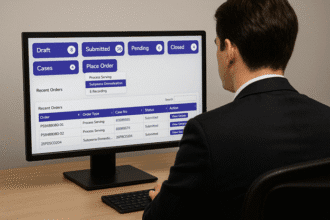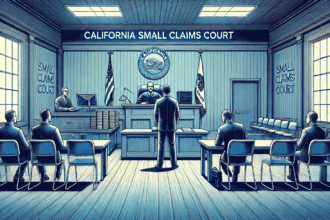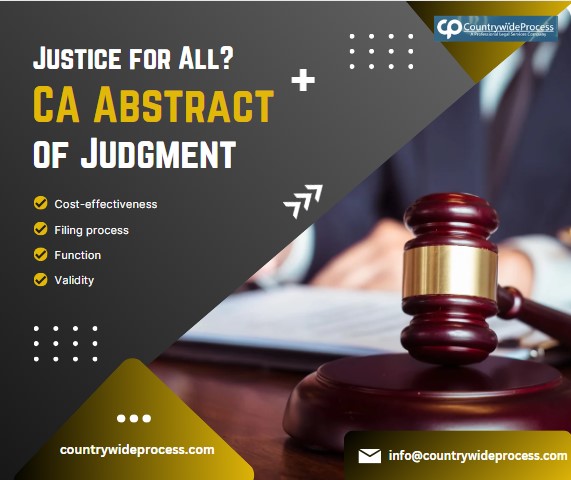Concerning the legal processes, it is evident that issues of accessibility and affordability play a significant part in a person’s attempt to seek justice in a court of law. The abstract of judgment in CA serves as the most critical step in asserting the creditor’s remedies after credit is granted. By shedding light on the detailed costs and processes of this procedure, more can be understood about how attainable justice is for the people of California with the help of e-records.
Understanding the Abstract of Judgment in CA is crucial
As a result, abstract of judgment in CA is a legal instrument that provides a recorded action by a court against a debtor. It provides the creditor with a right to the debtor’s property located in the county in which the record of the statement is made and upheld until the debtor pays the amount owed. Its remedial significance cannot be overemphasized, because it is useful for creditors seeking to assert their rights and pursue debtor defaults.
Traditional Filing Costs and Challenges
Even filing an abstract of judgment in CA was previously paper-based. Visits to the courthouse are usually accompanied. This process also took time and included charges for preparing the documents, transport, and fees associated with filing the case. These may prevent consumers from seeking legal recourse, especially if they cannot afford it.
The transition to electronic filing and online e-recording is underway
Earlier, California introduced e-filing and online e-recording to improve service delivery. This is how the online filing system works: the legal documents containing the abstract of judgment in CA are filed online, with minimal papers, and in the shortest time possible. This shift is premised on the realization of increasing access to services, as it allows one to forward documents from any area with an internet connection, eliminating the need for physical travel, which incurs some cost.
Cost Breakdown: E-Filing an Abstract of Judgment in CA
The fee schedule for an abstract of judgment e-filing depends on the county where the document may be filed in court. Normally, the charges are a basic processing charge, and additional charges may be charged per page for each certified copy or other copy. For instance, the LAC filing fee is $25, while certification and multiple pages attract extra charges.
The e-filing fees worked for are intended to cover the costs of processing and archiving electronic documents. These fees are usually relatively small compared to other filing methods; however, they must be considered by people attempting to move through the legal process on the cheap.
Accessibility and affordability considerations
For instance, initiatives such as new e-filing and online e-recording are aimed at achieving simple justice in California. Hence, e-records eliminate the inconvenience and cost associated with recording in the manner supported by embedded filing methods. Therefore, possession of an internet connection means a person of any status, regardless of the size of the check, can initiate legal processes and defend their rights with the help of a basic questionnaire.
The impact of technological advancements
Today, it can be noted that the court process has been made easier by adopting and integrating technology, which has opened opportunities for candidates in the market who are in dire need of efficient, cheap, and quality legal services. Automatons, web-based, and e-documents facilitate the handling of the documents and enhance the ‘legibility’ of the justice delivery and its quantum of openness. Still, these developments may entrench people’s freedom, given that they increase the transparency of sessions and the availability of a legal assistant.
Thus, changes in filing procedures for abstract judgments in California are part of a larger trend of striving for more cost-effective justice using technology. Another set of legal guidelines that have become much less formalized and more accessible is e-filing and online e-recording, which allow clients to avail themselves of the legal help offered more effectively and at a lower cost. As a result, it is possible to expect further evolution of these technologies, as well as an increase in the accessibility and affordability of justice for all citizens of California.
Conclusion
In conclusion, although there are still hurdles to overcome in delivering justice to all citizens, electronic filing and online e-recording alter this picture for the better. Through these technologies, the abstract of judgment in CA propels the realization of a better justice delivery system through efficiency, simplicity, and openness, as well as offering justice to a population that cannot afford the luxury of a classic legal remedy.






